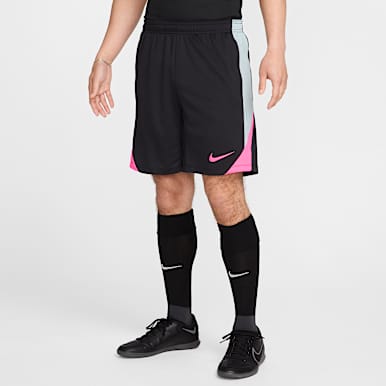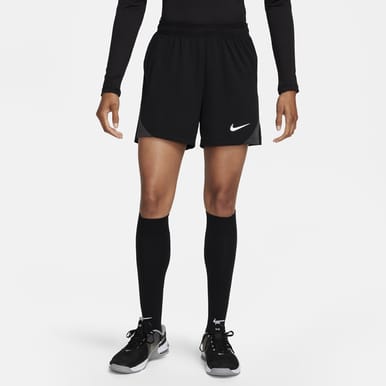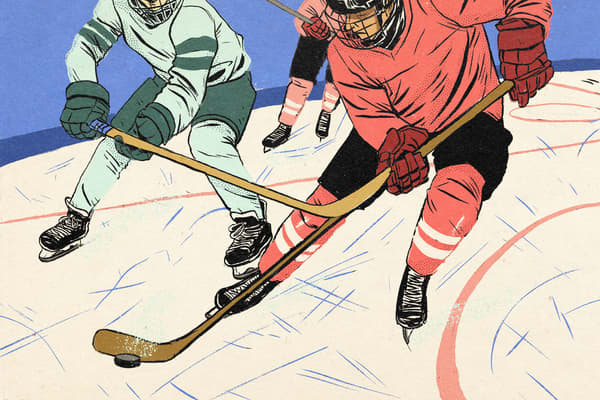Your Guide To Learning Soccer, According to Coaches
Sports & Activity
Soccer coaches explain the basics of how to play soccer.

Whether you played as a kid or have never kicked a ball, you may find that learning how to play soccer is easier than it seems. The game itself is straightforward, the positions are interchangeable, and the camaraderie between players can motivate more pick-up games and practices.
How To Play Soccer for Beginners
Traditionally, a soccer game involves 22 players on the field, and each team has 10 field players with one goalkeeper.
“A full game is 90 minutes, split into two, 45-minute halves,” said Carl Wild, a certified soccer coach with the English Football Association and Scottish Football Association, management expert and author of “Essential Practices for Player Development.”
“There are no breaks or [time-outs] within those halves. If there is a stop for an injury or substitution, officials will stop the watch and, usually, after 90 minutes, three or four minutes is added to the time,” he said.
(Related: How To Clean Soccer Cleats)
Soccer field sizes vary, but typically they’re around the same size of a football field (120 yards in length). However, you can play on smaller fields between 50 and 100 yards. A soccer field is called a pitch and is “split in half, so each team has a half they start in,” Wild said. Located within each half is an area called the penalty box or 18-yard box, which is positioned around the goal.
Scoring in soccer is quite simple — one goal equals one point. And, if it’s a league game, one team doesn’t have to win the game. Wild said one team will win or they will have what’s called a draw. A draw is when the score is tied, which can occur even if the game ends at 0 to 0. This changes in a competition format.
“After 90 minutes, if it’s the same score, you usually play another 30 minutes, split into two halves — so, 15 minutes and 15 minutes,” he said. “At the end of that, if it’s still the same, then it’s a penalty shootout and that’s usually five penalty kicks each, taken in turns,” he said. For context, penalty kicks entail a player kicking the ball into the net with a goalkeeper defending the ball.
After penalty kicks, if one team scored more than the other, that team wins the game. If they don’t score and the game is still tied, it goes into a round of sudden death, which is when players keep kicking penalty kicks until one team scores more than the other.
Player Positions (and the Difference Between Forward and Defense)
Soccer is the ultimate team sport in that anyone on the field can switch between defense and offense and score a goal, no matter their position. “The best way to describe all the positions in soccer is that they’re all the same and require the same skills, it’s just a matter of where you are on the field and what you want to do,” said Ray Selvadurai, a three-time youth soccer national championship coach in New York City.
In the game, there are 10 field players on each team in either forward, defender, and midfielder units and more specific roles within those units. “Knowing how you work together within those units is important,” Wild said. This ensures each player contributes to the game in necessary and impactful ways.
1.How To Play Forward in Soccer
Forward is an offensive position, sometimes referred to as an “attacking” position. The players in forward positions are typically the ones scoring or creating goal opportunities by passing the ball to the striker.
(Related: Every Position in Soccer, Explained)
2.How To Play Defense in Soccer
Defense is all about “defending and keeping the ball out of the goal, and making sure that the other team doesn’t get in dangerous opportunities to score,” Selvadurai said.
While the main objective of a defender is to keep the ball away from the goal, a defender can also score.
“That’s one of the best parts about being a defender — you’re kind of a two-way player,” Selvadurai said. “You can get forward and try to score, and at the same time you have to make sure that you’re keeping the other team from getting scoring opportunities.”
3.Goalkeeper
In soccer, there are two goalkeepers on the field, each protecting their team’s goal. This position requires different skill sets than a defender or forward.
“Not only do you have to keep the ball out of the net with your hands, but you also have to manage the game,” Selvadurai said. “Goalkeepers see the entire field the entire time — they’re usually very vocal and give [teammates] lots of directions,” he said.
4.Midfielder
Selvaduri calls midfielders the “link-up players” because “they’re really good distributors of the ball.” They’re the players who try to keep possession of the ball within their team and tend to switch between forward and defense roles the most.
5.Striker
A striker is a single player on the field situated closest to the other team’s goal. This is an attacking or forward position and strikers are typically good at maneuvering around defenders to score a goal.
The Rules of Soccer
Learning how to play soccer also means gaining a basic understanding of the rules. The more you play, practice, and watch games, the better you’ll grasp these parameters, but going into the sport with some idea can help catch you up to speed. Here are the basic rules of soccer.
1.No Hands
Using your hands is a big no-no in soccer. In soccer, it’s against the rules to maneuver the ball with your hands and arms — this is often called a handball.
“The handball rule is very important and a growing gray area,” said Luke Toughey, a professional soccer coach at The University of Brighton. “No player other than the goalkeeper inside their marked-out area can touch the ball with any part of their arm below the sleeve of their shirt or it will be the opponent’s ball,” he said. With that said, there are instances when the ball might be kicked in your direction and come in contact with your arms. Accidental cases like that are okay, so long as you don’t use your arms to handle the ball.
2.Offside
This is another term you’ll hear frequently in soccer — and one of the most important rules of the game. According to Toughey, offside means that “the furthest forward attacker on a team must have at least one opposition outfield defender between them and the opponent’s goal, or the attacker will be in an offside position.”
Being offside creates a situation where it might be easier for an attacking player to score a goal, since there isn’t anyone to defend the ball.
3.Foul
In soccer, foul play is against the rules. While it’s up to the referee’s discretion, fouls are when a player kicks, trips, pushes, or showcases other types of unsportsmanlike behavior toward an opponent.
4.Penalty
Just like other sports, penalties occur in soccer. The referee will call a penalty when a player makes a foul from inside the 18-yard box. Penalties are typically categorized by color and the referee will hold up either a red or yellow card to communicate the penalty. Yellow cards in soccer mean dangerous or unsportsmanlike behavior whereas red cards mean the player is removed from the match.
“It is fundamentally important to not commit a foul or handball inside your penalty area, as doing so will result in the opponent feinting a penalty kick, whereby the opponent striker is statistically very likely to score a goal,” Toughey said. “Even more important than not conceding a penalty is having a player sent off [the field], either by being handed a red card or two yellow cards for indecent conduct, such as a dangerous tackle,” he said. When a player gets sent off the field, it means they are no longer allowed to participate in the game. This player also can’t be replaced.
5.Corner Kicks
If the ball goes over the goal line but a goal is not scored, and is last touched by a player from the defending team, a corner kick is awarded to the attacking team. The corner kick restarts the play, giving the attacking team a chance to redeem themselves.
6.Goal
A goal is when a player kicks the ball into the net of the opposing team. While forwards are more likely to score, any position and player on the field can score, including goalkeepers.
7.Throw-ins
If a player kicks the ball out of bounds, the referee gives a player from the opposing team (the team that did not last touch the ball) a throw-in. When throwing the ball back into bounds, players must keep both feet on the ground with both hands on the ball and above their head.
8.Penalty Kicks
When a foul occurs within the penalty box by the defending team, the opposing team gets a penalty kick, meaning they have the opportunity to score a goal with just the goalkeeper defending. Penalty kicks must occur 10 yards away from the penalty line, directly at the goalkeeper.
9.Free Kicks
When a foul occurs anywhere else on the pitch (not the penalty box), it’s a free kick to the opposing team. A direct free kick means that a player gets to kick the ball directly at the goal, which may be blocked by a group of defenders on the opposing team. And an indirect free kick is when a player must kick the ball to a teammate first before it can go into the goal (and count).
Words by Jessie Quinn














